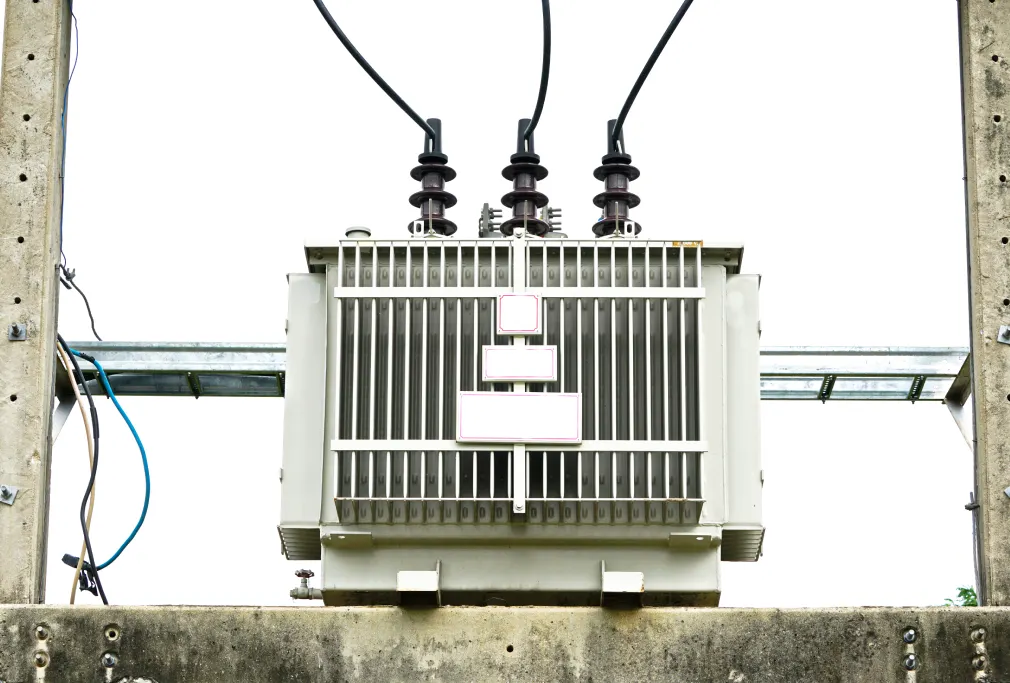Distribution Transformers

Transformers are among the most efficient machines designed by mankind, primarily constructed using magnetic steel, copper or aluminium. Broadly there are two types (a) Power Transformer, and (b) Distribution Transformer. Due to copper's conductivity, which is nearly twice that of aluminium, it is often the preferred choice for transformer construction. The largest power transformers achieve efficiencies of up to 99.75%. However, distribution transformers, typically rated between 25 and 2,500 kVA, may lose about 1-2% of energy transferred as heat, while smaller transformers (6-25 kVA) can operate at efficiencies as low as 95%. Being a static device without any moving part, a transformer, if well designed, operated and maintained, can serve much beyond its technical life that is generally 25 years. Other aspect is they are capital intensive thus the user must make the best utilisation of his/her capital deployed.
Unfortunately, many distribution transformers in India, particularly those with lower ratings such as 25 kVA, 63 kVA, and 100 kVA (11kV/415V, 3-phase), serving rural areas, utilise materials and manufacturing methods of old generation, leading to significant energy losses and high failure rates.
The failure rate for these transformers in India is concerning, standing at around 16% in public utilities i.e. State Distribution Companies (DISCOMs), far exceeding the international norm of 1-2% or even the benchmark achieved by private DISCOMs in India itself. Moreover, the lifespan of conventional transformers is typically only 4-5 years. This high failure rate worsens the already substantial Transmission and Distribution (T&D) losses in the power distribution network and increase operational losses in public DISCOMs. To address ATC loss conundrum in our nation, a 360-degree approach towards robust asset management practices is more of an imperative rather than a choice today.
Advantages of Copper in Distribution Transformers
Copper presents several advantages when used in distribution transformers, including:
- Inherent Low Loss Material: Copper’s superior conductivity means lower size and less energy lost as heat.
- Simplified Installation: Copper requires no special skills during jointing and termination, minimising failures linked to defective joints while manufacturing or repairing.
- Robust Performance: Copper outperforms aluminium in conductivity, thermal conductivity, and resistance to short circuits.
- Availability and Cost: Copper is readily available and competitively priced, making it a practical choice for transformer manufacturers.
Transforming the Copper in Transformers
Distribution transformers are essential assets for any power distribution network. Their efficient operation leads to long-term benefits for Indian utilities. The high failure rate of distribution transformers—around 12-16% in state utilities—contrasts sharply with a global average of less than 1%. The situation aggravates due to huge number of old legacy transformer in service post multiple time repair in absence of cash to replace old assets. To tackle this issue, ICA India is advocating for remanufacturing or active repair methods rather than reactive repairs. Active repair, akin to heart operation of a human being, proactively reduces no-load and load losses, which can significantly improve transformer reliability and efficiency while giving a fresh lease of extended life at much lower capital invested.
The benefits of active repair include
- Reduction of Technical Losses: Lower energy losses save on power procurement costs which otherwise passes down as increased consumer tariff.
- Enhanced Energy Efficiency: Aligns with the National Energy Efficiency mandates.
- Increased Reliability: Minimises downtime and extends transformer lifespan.
- Improved Capacity: Enables transformers to handle greater kVA loads.
- Stakeholder Opportunities: Provides avenues for original equipment manufacturers (OEMs) to engage in ongoing operations and maintenance (O&M) as a service provider with energy service company (ESCO) model or DT repairers to get enhanced earning through performance-based repair.
Transformer Market Scenario
Key Objectives of the Program
- Stakeholder Engagement: Bring together all power distribution stakeholders to address issues of interest.
- Education on Standards: Inform stakeholders about the latest standards, updated quality control orders and certification requirements.
- Interactive Discussions: Facilitate dialogue between stakeholders and users on the standards, application research findings and asset management practices.
What We Do
The International Copper Association India (ICA India) is dedicated to improving distribution transformer performance by promoting the use of copper windings in place of aluminium to build robust distribution infrastructure that is climate resistant too. We engage in standardisation efforts and create awareness about the adoption of new BIS Standards and BEE Energy Efficiency Labels (Star Rating) to ensure the effective implementation of energy-efficient distribution transformers in India. We promote copper for material sustainability through recycling and supporting energy sustainability in the country.
Resources
No posts found!

